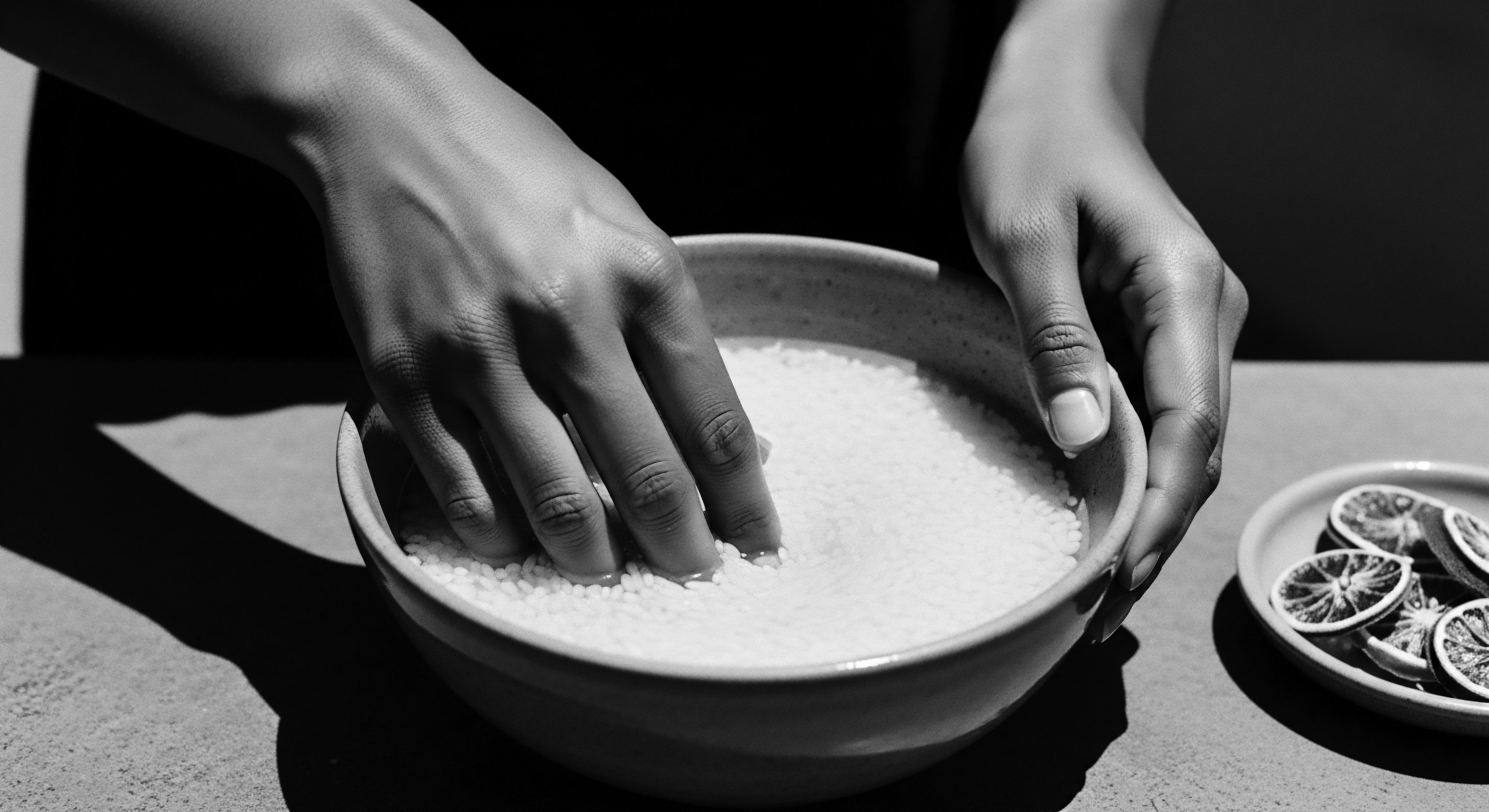
Fundamentals
The notion of ‘Hard Water’ may seem deceptively simple, often conjuring images of stubborn soap scum or dull dishes. Yet, its true meaning stretches far beyond these domestic annoyances, holding profound significance for the vibrant legacy of textured hair. Fundamentally, hard water describes water imbued with a heightened concentration of dissolved mineral ions, primarily calcium and magnesium. These metallic elements, though naturally occurring, transform water from a neutral cleanser into a subtle, often unseen, force that interacts distinctly with hair, especially hair with intricate curl patterns.
Imagine water descending from ancient mountains, flowing through riverbeds, or seeping into underground aquifers. Along its passage, it collects traces of the earth it traverses, dissolving minerals from limestone, chalk, and gypsum. The presence of these minerals, typically measured in grains per gallon (GPG) or parts per million (ppm), determines water’s hardness.
A higher measurement indicates more minerals, leading to greater hardness. This natural process, an echo of geological time, shapes the very water that has touched the hair of our ancestors for generations.
For communities across the African continent and throughout the diaspora, understanding water’s qualities was not a matter of scientific analysis in laboratories but a lived, intuitive knowledge passed down through generations. Water, a sacred element, was recognized for its varying properties, influencing daily rituals, including those for hair care. The methods developed to cleanse and nourish hair in different regions often reflected an inherent understanding of the local water’s impact, adapting practices to its specific characteristics. This deep connection to the source, to the very elemental biology of water, formed the basis of ancestral practices.
Hard water is water rich in dissolved calcium and magnesium ions, naturally collected from the earth, and it profoundly influences the historical and contemporary care of textured hair.
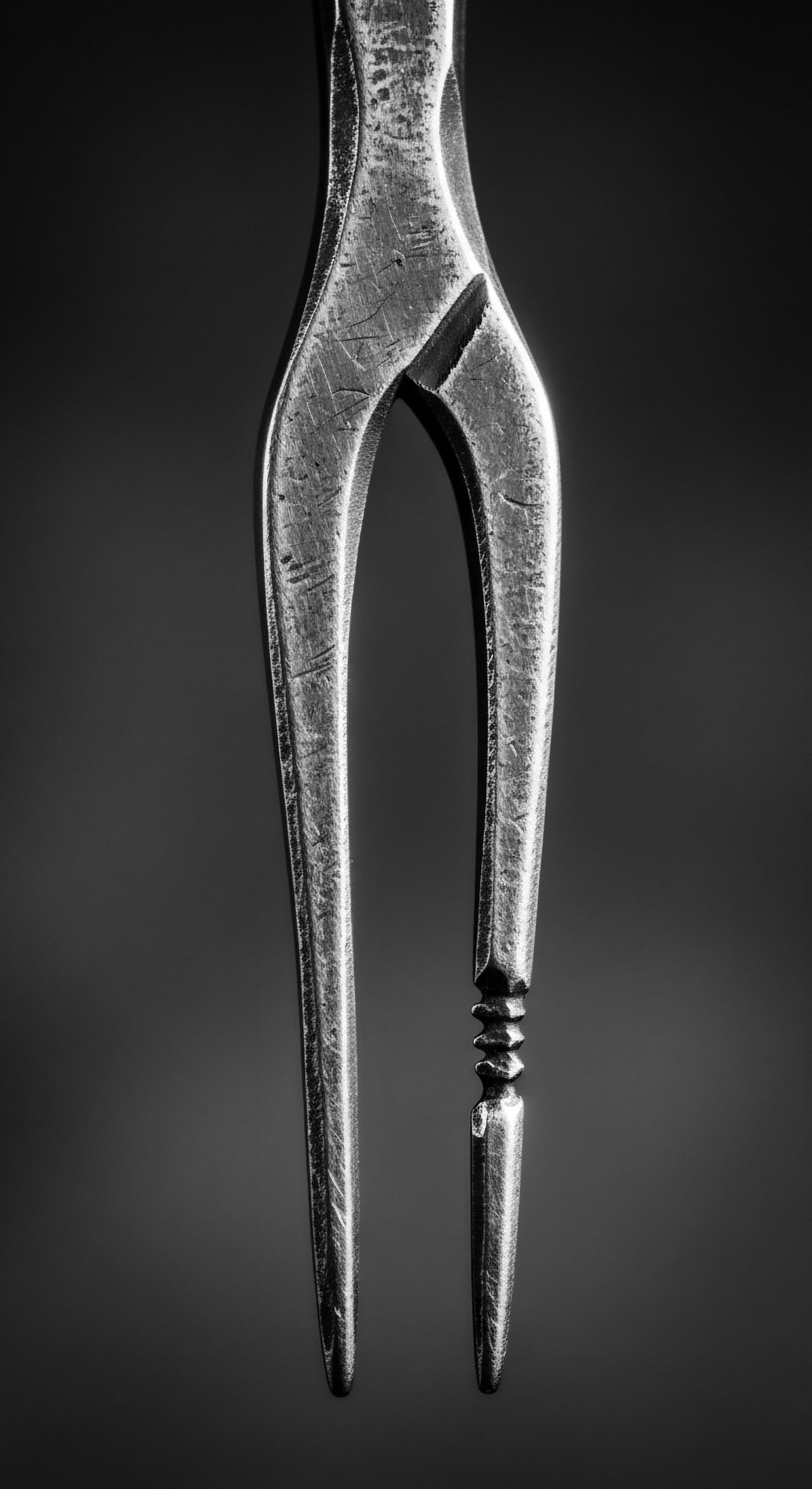
Elemental Foundations of Water’s Character
The mineral content of water directly impacts its ability to lather with soap. Soft water, having minimal mineral presence, readily produces suds, allowing for thorough cleansing. Hard water, by contrast, reacts with soap, forming an insoluble precipitate—the familiar soap scum—which hinders effective lathering and adheres to surfaces, including hair strands. This chemical interaction has always dictated how much effort and what types of cleansing agents were necessary for hair traditions.
- Calcium Carbonate ❉ A primary contributor to water hardness, often originating from limestone and chalk deposits.
- Magnesium Sulfate ❉ Another significant mineral, commonly found in areas with gypsum.
- Bicarbonates ❉ These contribute to temporary hardness, which can be reduced by boiling water.
- Chlorides ❉ Less common but can also add to the overall mineral load.
These dissolved elements, though microscopic, leave an undeniable footprint on the physical experience of washing and caring for textured hair. Their presence alters how conditioners penetrate and how styling products adhere, creating a cyclical challenge that communities have addressed with ingenuity across centuries. The ancestral insight into how water behaves with hair, even without modern chemical terms, was a testament to observational wisdom.
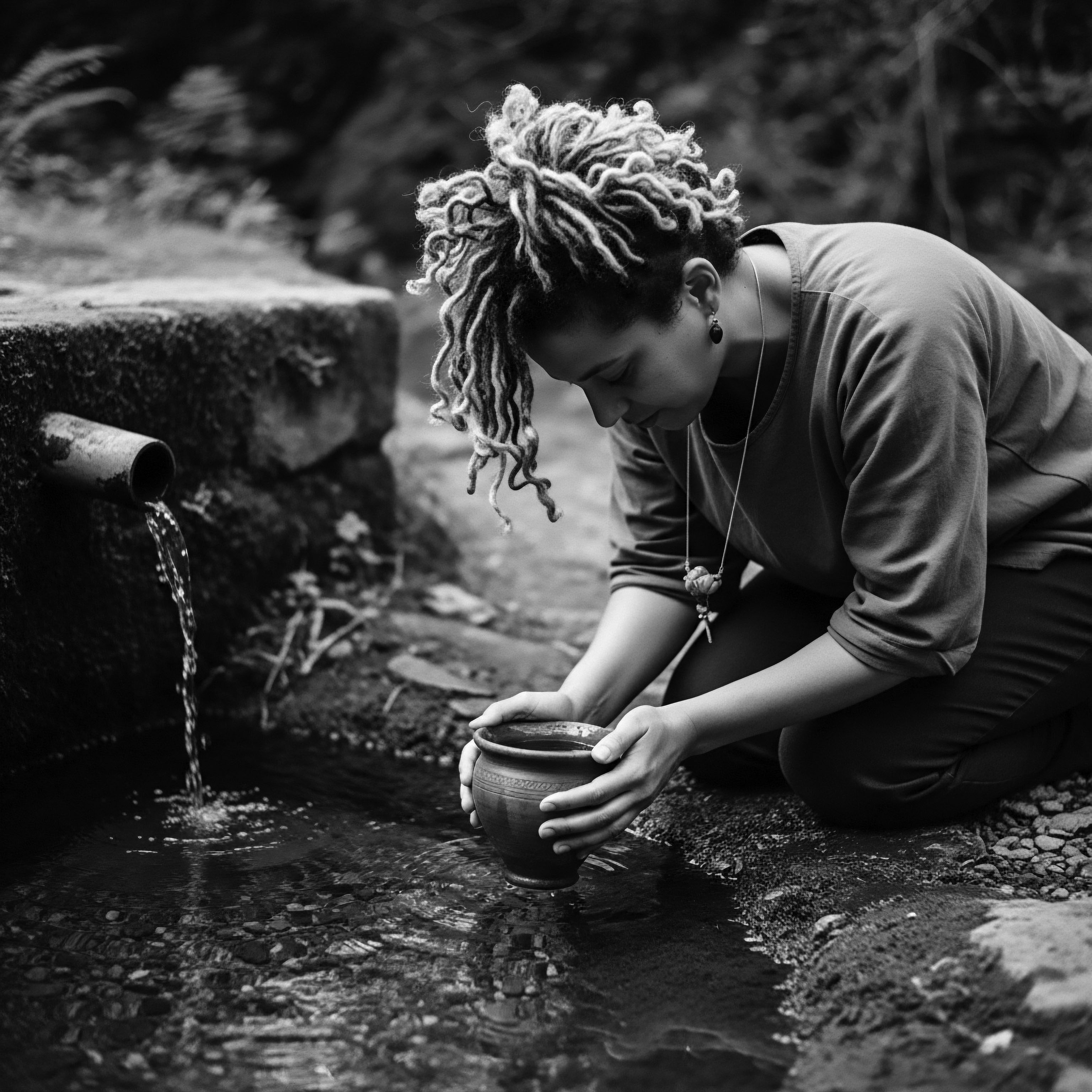
Intermediate
Moving beyond the basic composition of hard water, its influence on textured hair unfolds as a complex interplay of chemistry, cultural adaptation, and enduring resilience. The elevated presence of calcium and magnesium ions in hard water binds to the hair shaft, particularly on textured strands, which possess a more open cuticle structure compared to straight hair. This adherence creates a mineral coating, leading to a host of tangible effects that necessitated unique care strategies throughout history.
The mineral deposits from hard water can render hair feeling rough, brittle, and significantly drier. This sensation arises because the minerals hinder the hair’s capacity to fully absorb moisture from conditioners and stylers. The film left by hard water also diminishes the natural sheen of curls, coils, and waves, making them appear dull and lifeless.
Over time, this mineral buildup can contribute to tangling and breakage, particularly for delicate textured strands prone to dryness and fragility. The very act of cleansing, meant to refresh, can thus inadvertently strip hair of its innate vitality when performed with hard water without proper countermeasures.
Hard water minerals adhere to textured hair, leading to dryness, dullness, and increased vulnerability to breakage, necessitating adaptive care methods.
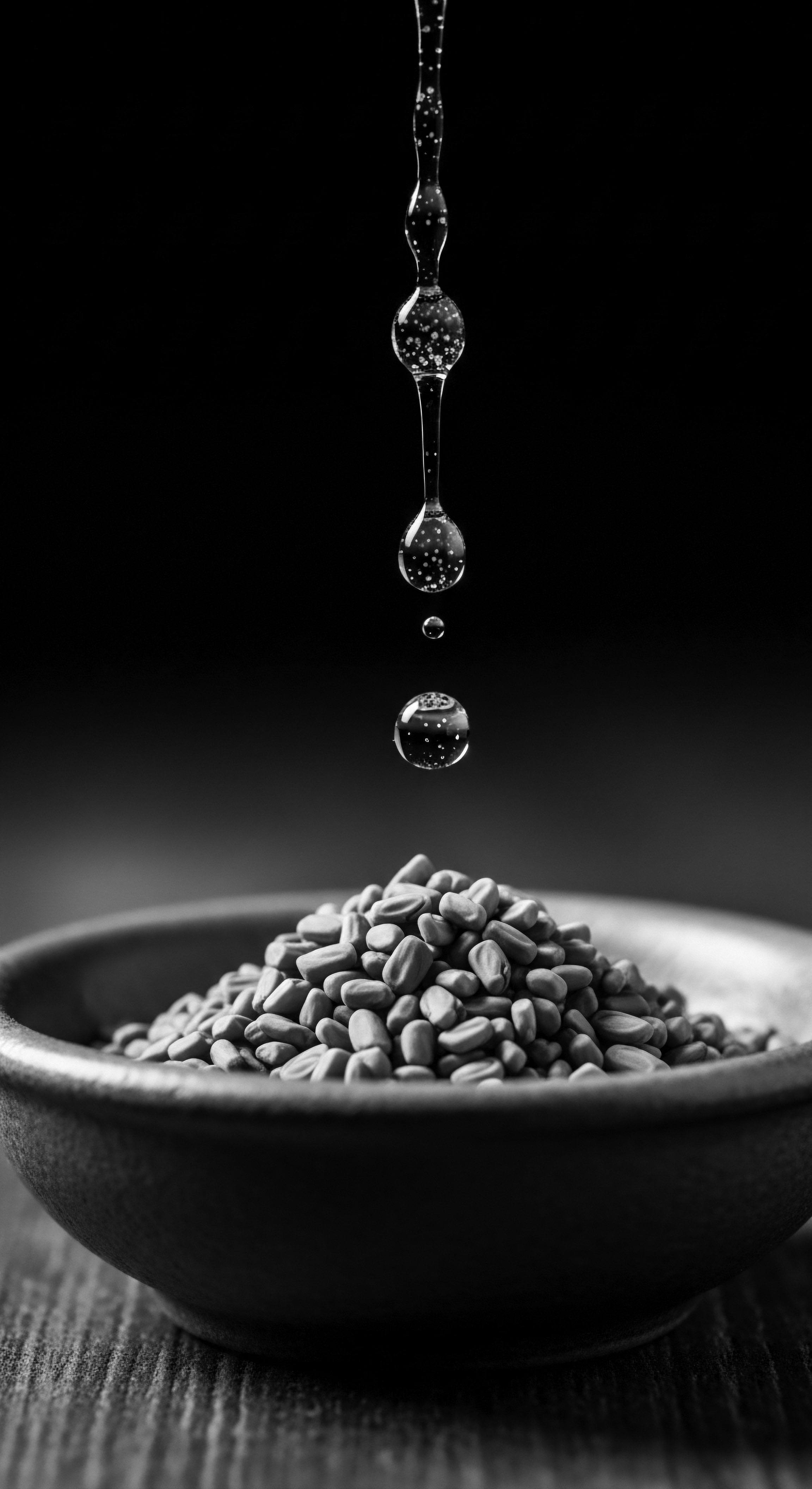
Ancestral Ingenuity in Water Wisdom
Across generations, communities with Black and mixed-race hair heritage developed sophisticated systems of care that, whether consciously attributed to water hardness or not, effectively mitigated its adverse effects. These methods were born from a deep connection to available natural resources and an intimate understanding of hair’s needs. For instance, the traditional use of oils, butters, and specific plant-based ingredients in African hair care practices was not merely for cosmetic appeal; it served a vital protective function against environmental stressors, including the quality of local water sources.
Consider the Himba women of Namibia, renowned for their striking red ochre paste, known as “otjize,” applied to their hair and skin. This concoction of animal fat, butter, and red ochre serves as a protective layer, shielding the hair from the harsh arid climate. While not explicitly stated as a hard water remedy, this practice of heavy coating and infrequent washing is a prime example of an ancestral method that would inherently prevent mineral buildup from water.
The layers of natural emollients would create a barrier, sealing the hair cuticle and maintaining moisture, regardless of the mineral content of the water used for occasional rinsing or cleansing. This wisdom speaks to a profound understanding of sealing and protection.
Similarly, in regions where water quality varied significantly, practices involving water filtration or the alteration of water prior to hair application were not uncommon. While formal scientific water analysis was absent, observation taught communities that certain water sources, or water treated in specific ways, yielded better results for hair. The utilization of specific herbs and plant extracts, often steeped in water, might have provided a natural chelating or conditioning effect, softening the water or counteracting mineral adherence.
| Traditional Practice/Region Himba (Namibia) |
| Hair Care Method Application of otjize (ochre, butter, animal fat) |
| Implied Benefit (Addressing Water Quality) Forms a protective barrier, reducing direct water exposure and mineral adhesion. |
| Traditional Practice/Region Basara (Chad) |
| Hair Care Method Chebe powder mixed with oils/fats for length retention. |
| Implied Benefit (Addressing Water Quality) Intense conditioning and sealing, minimizing mineral penetration and promoting moisture. |
| Traditional Practice/Region West Africa (General) |
| Hair Care Method Use of natural plant-based cleansers (e.g. Ambunu) and rinses. |
| Implied Benefit (Addressing Water Quality) May possess mild chelating properties or cleanse without harsh stripping. |
| Traditional Practice/Region Diaspora (Slavery Era) |
| Hair Care Method Reliance on emollients (greases, oils) and protective styles. |
| Implied Benefit (Addressing Water Quality) Compensated for infrequent washing with potentially harsh water, retaining natural moisture. |
| Traditional Practice/Region These ancestral adaptations highlight deep intuitive knowledge in preserving textured hair against environmental challenges. |
The legacy of these ancestral practices extends to contemporary hair care within the Black and mixed-race hair communities. Many modern practices, such as pre-pooing with oils, co-washing, and layering leave-in conditioners and stylers, echo the protective and moisturizing strategies of our forebears. These routines implicitly address the challenges posed by hard water, whether consciously or instinctively, maintaining the vitality of textured strands. This ongoing tradition of care represents a continuous conversation between ancient wisdom and current needs, always striving to safeguard the inherent beauty of our hair.
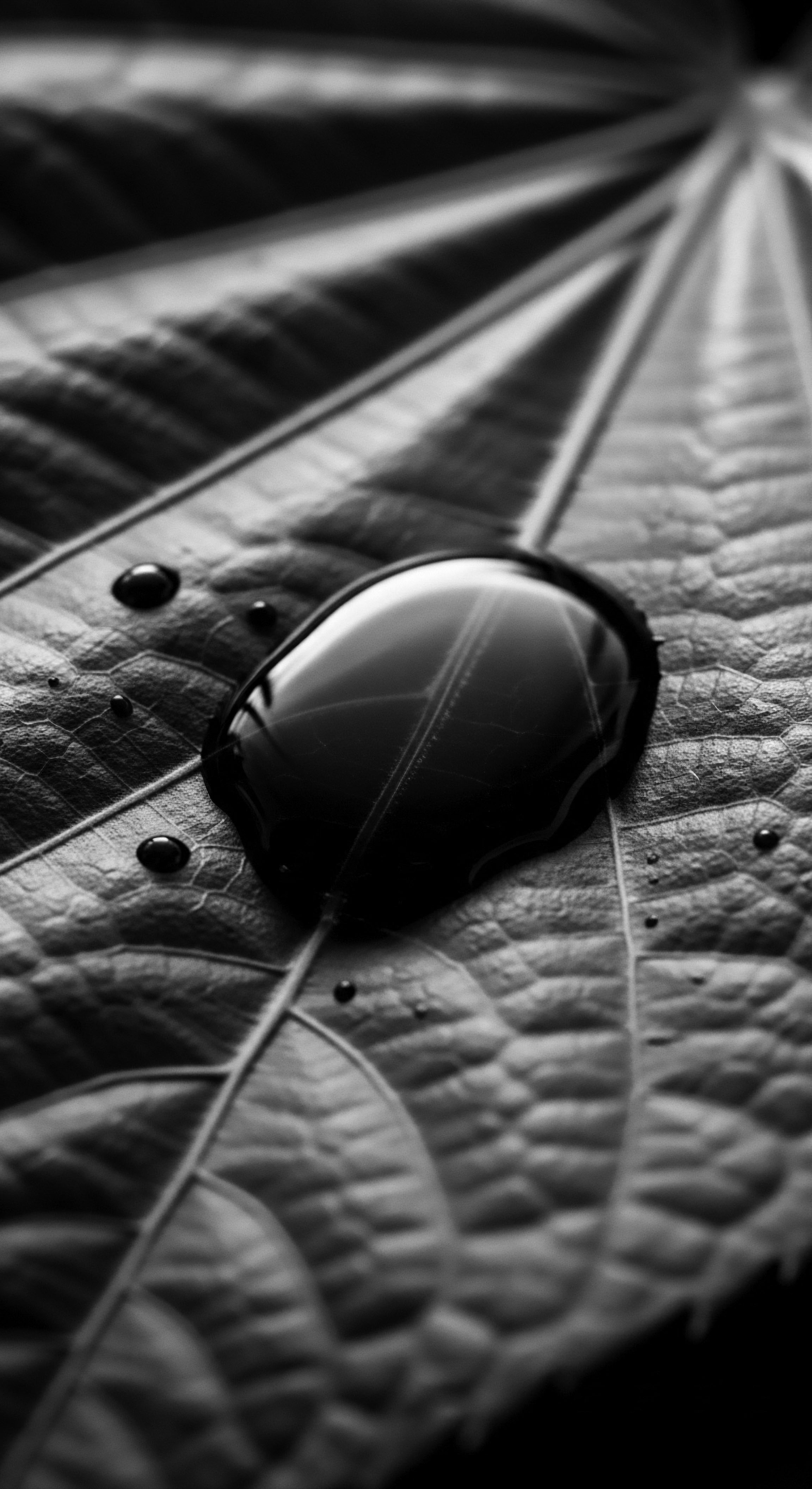
Academic
The academic elucidation of hard water, particularly through the lens of textured hair heritage, transcends a mere chemical description; it becomes a profound inquiry into the persistent environmental challenges faced by diasporic communities and the ingenious adaptations forged in response. The meaning of hard water, from this advanced perspective, is not confined to its mineral composition, but extends to its societal and historical implications, influencing practices and perceptions of textured hair across generations.
Hard water, in a rigorous scientific context, is defined by its concentration of multivalent cations, predominantly calcium (Ca²⁺) and magnesium (Mg²⁺) ions, dissolved from geological strata. These ions, possessing a positive charge, readily interact with negatively charged surfaces, such as the anionic sites on the hair cuticle and the carboxylic acid groups present in fatty acids found in soaps. This ionic exchange leads to the formation of insoluble mineral salts, known as limescale or soap scum, which precipitate out of the water. On a microscopic level, these mineral deposits adhere to the hair shaft, forming a persistent film that occludes the cuticle layers.
This occlusion hinders the hair’s natural hydration mechanisms, impedes the effective penetration of conditioning agents, and alters the hair’s surface morphology, increasing frictional forces between strands. The consequence is a demonstrable reduction in hair elasticity, heightened susceptibility to mechanical damage, and a palpable dullness attributable to light scattering from the irregular mineral coating.
Hard water’s academic definition expands beyond mineral content to its historical and sociological impact on textured hair care, fostering unique adaptive practices.
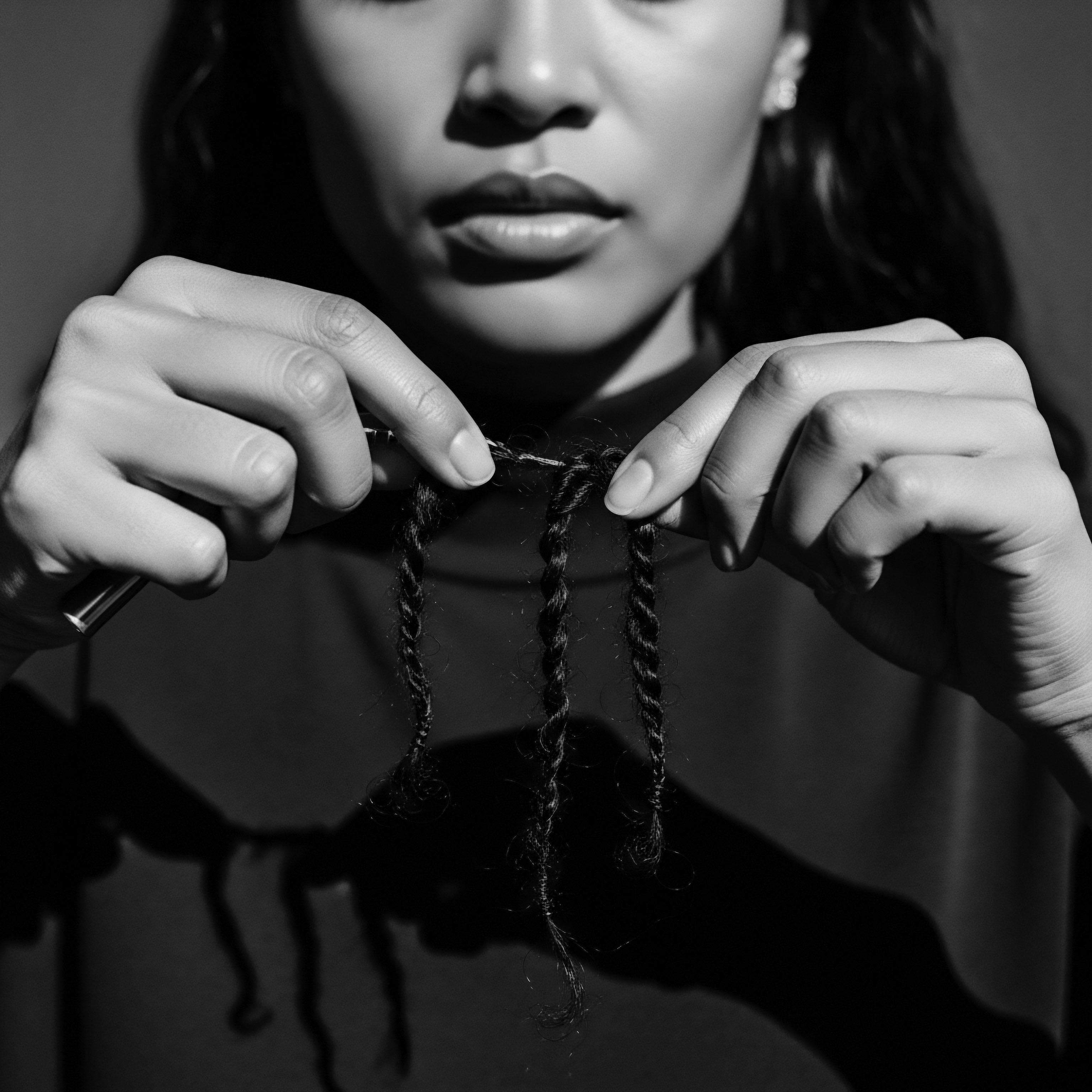
Interconnected Incidences ❉ Water Quality, Health, and Hair
The historical experience of Black and mixed-race communities, particularly within the context of the transatlantic slave trade and its aftermath, provides a compelling, if often overlooked, framework for understanding the deep significance of water quality in hair care. During enslavement, access to clean, potable water was frequently limited and controlled, forcing individuals to rely on whatever sources were available, which often included untreated or naturally hard water. The struggle for basic hygiene and health was inextricably linked to the quality of water. Sharla M.
Fett, in her seminal work Working Cures ❉ Healing, Health, and Power on Southern Slave Plantations (2002), meticulously details the pervasive challenges to health faced by enslaved people and their resourceful use of traditional African herbal knowledge to maintain well-being amidst scarcity and systemic oppression. While Fett’s study focuses on healing and physical health, the implications for hair care are undeniable. If water for drinking and bathing was often harsh or contaminated, then the water used for hair would have been no exception.
The necessity of adaptation in such environments led to the evolution of hair care practices that prioritized moisture retention and protective styling, inadvertently counteracting the effects of hard water. For instance, the prevalent use of greases, animal fats, and various plant oils for hair conditioning among enslaved people in the American South was not merely a stylistic choice or a reflection of limited product availability. These emollients served as crucial barriers, sealing the hair cuticle and mitigating the drying, damaging effects of harsh environmental conditions and potentially hard, impure water sources. This approach to hair care was an act of both self-preservation and cultural continuity, a quiet resistance against the dehumanizing forces of enslavement.
A telling example of this systemic adaptation is evident in the prevalence of scalp conditions like seborrheic dermatitis among African Americans, historically exacerbated by infrequent washing and product buildup, a direct consequence of the challenges posed by hard water and limited resources for adequate cleansing. The difficulty in thoroughly rinsing hair with hard water, coupled with the need to stretch wash days due to scarcity of time or softened water, would have created an environment conducive to such conditions. The continuous adaptation of hair care routines, from the antebellum period through the Great Migration, reflects a persistent engagement with the realities of water quality and its impact on hair health.
- Water Scarcity and Quality ❉ Enslaved populations often had limited access to clean, soft water, necessitating adaptations in hair and body care routines.
- Protective Emollients ❉ The historical widespread use of oils and greases on textured hair acted as a sealant, reducing direct exposure to hard water and its drying effects.
- Stylistic Adaptations ❉ Protective styles, such as braids and twists, not only preserved hair length but also reduced the frequency of direct water exposure and subsequent mineral buildup.
- Ethnobotanical Wisdom ❉ The continued use of plant-based cleansers and conditioners in various African and diasporic communities, such as Ambunu or specific leaf infusions, may have possessed inherent water-softening or chelating properties, a testament to ancestral botanical knowledge.

The Biophysical Impact and Mitigation Strategies
From a biophysical standpoint, the interaction of hard water with the keratin structure of textured hair is multifaceted. The mineral ions, particularly calcium, can form insoluble salts with anionic surfactants present in shampoos, reducing lather and leaving a residue. Beyond this, calcium ions can bind to the hair’s surface, creating a rough texture and increasing friction, which contributes to tangling and subsequent mechanical breakage. Magnesium ions, while also contributing to hardness, tend to have a slightly different deposition pattern, though their collective effect is additive.
The academic pursuit of understanding hard water’s impact on textured hair leads to an examination of traditional and contemporary mitigation strategies. Historically, techniques such as boiling water to reduce temporary hardness (by precipitating bicarbonates) or allowing water to stand to settle impurities (sedimentation) were rudimentary but effective forms of water preparation for hair care in various African communities. The incorporation of natural acidic rinses, like those derived from diluted vinegar or certain fruit extracts, would have served to rebalance the hair’s pH and potentially dissolve some mineral deposits.
Modern scientific interventions often validate these ancestral intuitions. Chelating shampoos, for example, contain ingredients like EDTA (ethylenediaminetetraacetic acid) or sodium citrate that bind to mineral ions, preventing their deposition on the hair and removing existing buildup. Shower filters designed to reduce mineral content represent a technological advancement on the ancient quest for softer, hair-friendlier water.
The convergence of these approaches, from time-honored rituals to cutting-edge science, highlights a continuous human endeavor to harmonize with natural elements and protect the integrity of our crowns. The implications extend beyond individual hair health, touching upon environmental justice, resource accessibility, and the ongoing reverence for ancestral knowledge in the face of modern challenges.
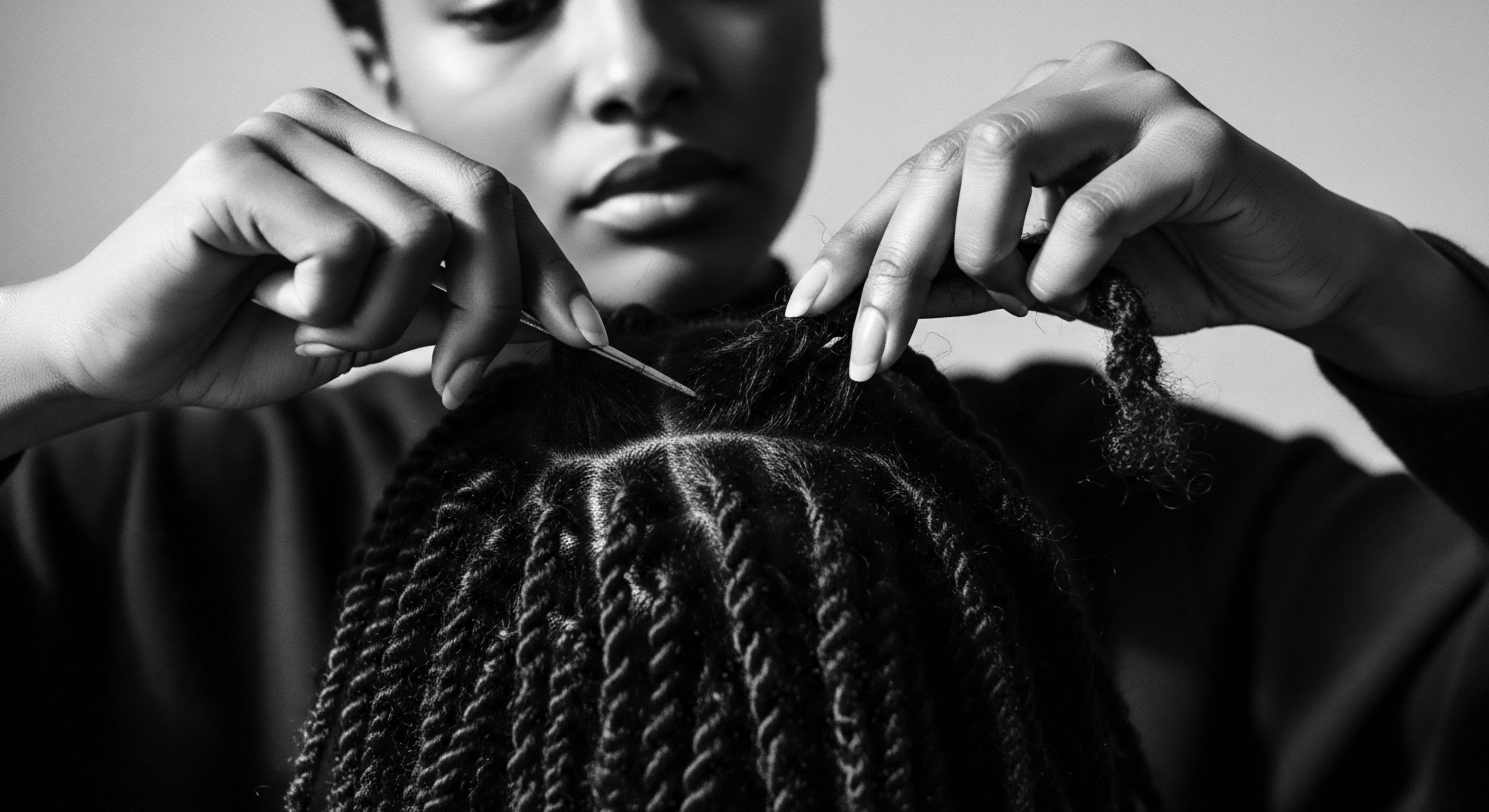
Reflection on the Heritage of Hard Water
The journey through the complexities of hard water, from its elemental beginnings to its profound echoes in the heritage of textured hair, is a meditation on resilience and continuous adaptation. It reminds us that our hair, with its diverse textures and vibrant stories, carries the imprint of environmental realities and the ingenuity of generations past. The waters that cleansed and shaped the coils, kinks, and waves of our forebears, often bearing the weight of dissolved earth, compelled a deep, intuitive wisdom of care.
In every ancestral practice—the careful selection of plant-based cleansers, the anointing with rich oils and butters, the art of protective styling—we find a testament to a profound understanding of harmony with nature’s offerings, even when those offerings presented challenges. This knowledge, born from necessity and cultivated through observation, transcends scientific nomenclature; it is an embodied heritage, a living archive of how communities navigated their world. The story of hard water and textured hair is not merely one of chemistry; it is a narrative of cultural survival, of beauty maintained against odds, and of the enduring spirit that continues to nurture the soul of a strand. It invites us to honor the past as we tend to our crowns today, recognizing the unbroken lineage of care that flows through us.
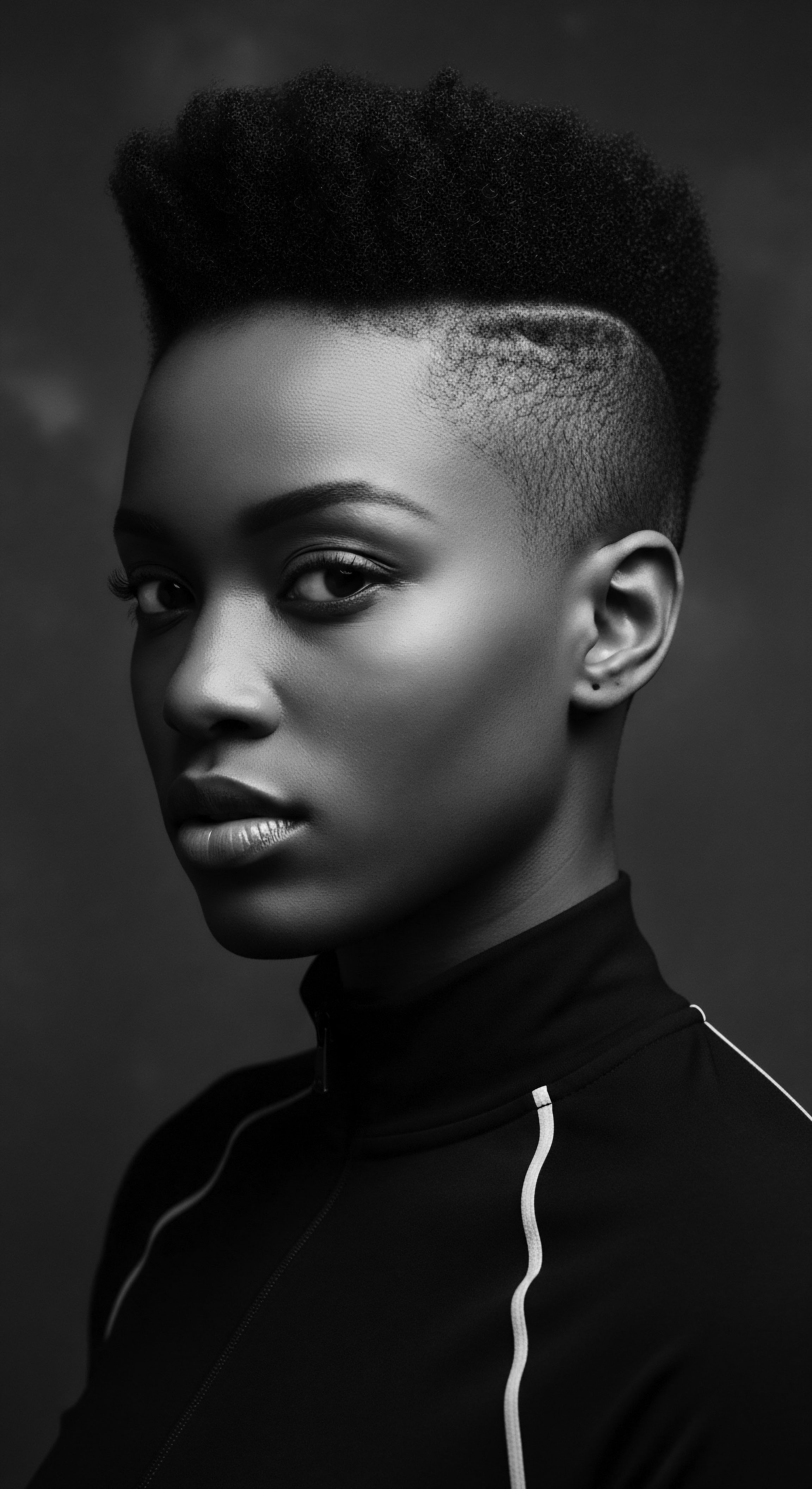
References
- Fett, Sharla M. Working Cures ❉ Healing, Health, and Power on Southern Slave Plantations. Chapel Hill ❉ University of North Carolina Press, 2002.
- Terborg-Penn, Rosalyn, and Andrea Benton Rushing. Women in Africa and the African Diaspora. Washington, D.C. ❉ Howard University Press, 1987.
- Morrow, Willie. 400 Years Without a Comb. San Diego ❉ Morrow, 1973.
- Matiku, Dafina Nyabhasamba. The Intersection Between Black Hair and the Environment ❉ Hair as a Site for Environmental Justice and Sustainability. Senior Thesis, Scripps College, 2021.
- Amagloh, Francis K. and Benang, Alex. “Water purification using Moringa oleifera seed coagulant ❉ a review.” African Journal of Agricultural Research 4, no. 12 (2009) ❉ 1461-1466.
- Lopresti, Patrick, et al. “Hot comb alopecia.” Archives of Dermatology 100, no. 3 (1969) ❉ 316-321.
- Ramey Berry, Daina. The Price for Their Pound of Flesh ❉ The Value of the Enslaved, From Womb to Grave, in the Building of a Nation. Boston, MA ❉ Beacon Press, 2017.
- Ethnobotany Research and Applications. “Plants used for hair and skin health care by local communities of Afar, Northeastern Ethiopia.” Ethnobotany Research and Applications 29 (2025) ❉ 1-13.
- Wong, Nikita, Kirk Williams, Starling Tolliver, and Geoffrey Potts. “Historical Perspectives on Hair Care and Common Styling Practices in Black Women.” Cutis 115, no. 3 (2025) ❉ 95-99.
